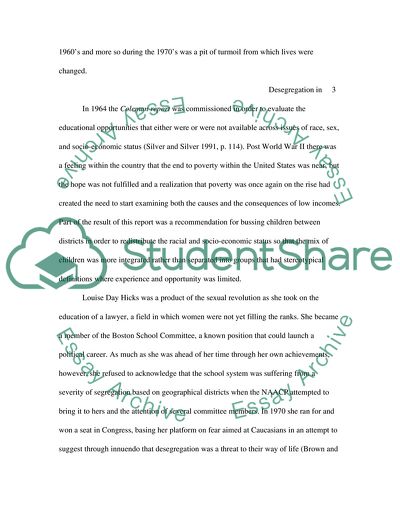Cite this document
(Desegregation in Boston: Portrait of the Effects of Racial Integration Report Example | Topics and Well Written Essays - 1500 words, n.d.)
Desegregation in Boston: Portrait of the Effects of Racial Integration Report Example | Topics and Well Written Essays - 1500 words. https://studentshare.org/history/1738316-busing-and-the-desegregation-of-public-schools-in-boston
Desegregation in Boston: Portrait of the Effects of Racial Integration Report Example | Topics and Well Written Essays - 1500 words. https://studentshare.org/history/1738316-busing-and-the-desegregation-of-public-schools-in-boston
(Desegregation in Boston: Portrait of the Effects of Racial Integration Report Example | Topics and Well Written Essays - 1500 Words)
Desegregation in Boston: Portrait of the Effects of Racial Integration Report Example | Topics and Well Written Essays - 1500 Words. https://studentshare.org/history/1738316-busing-and-the-desegregation-of-public-schools-in-boston.
Desegregation in Boston: Portrait of the Effects of Racial Integration Report Example | Topics and Well Written Essays - 1500 Words. https://studentshare.org/history/1738316-busing-and-the-desegregation-of-public-schools-in-boston.
“Desegregation in Boston: Portrait of the Effects of Racial Integration Report Example | Topics and Well Written Essays - 1500 Words”. https://studentshare.org/history/1738316-busing-and-the-desegregation-of-public-schools-in-boston.


